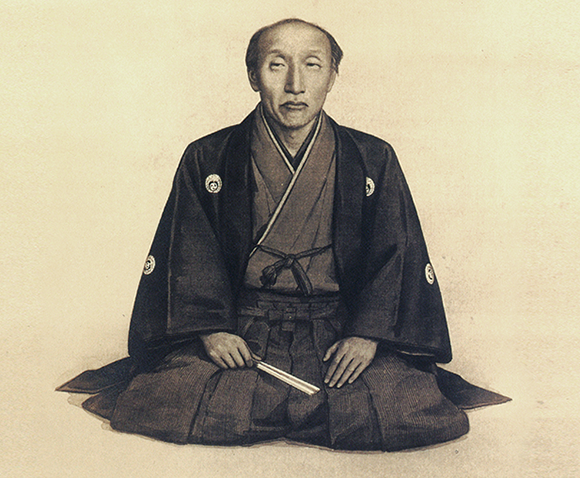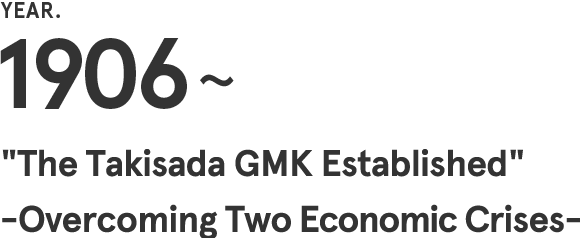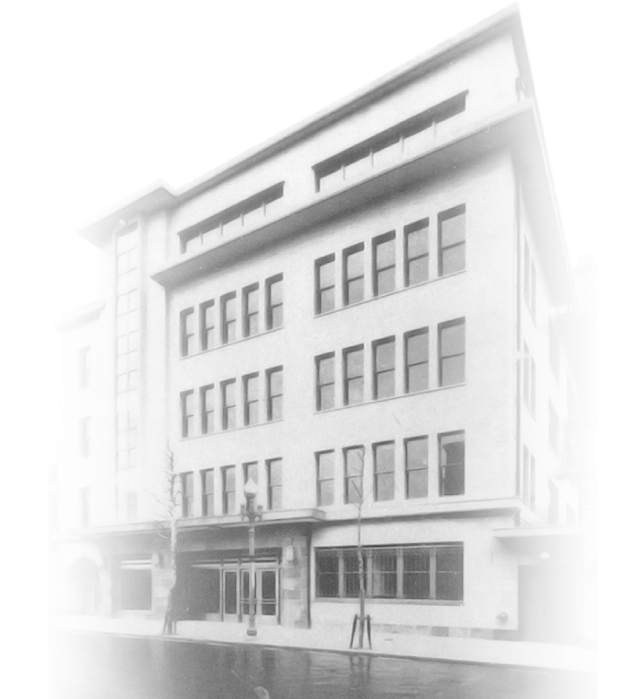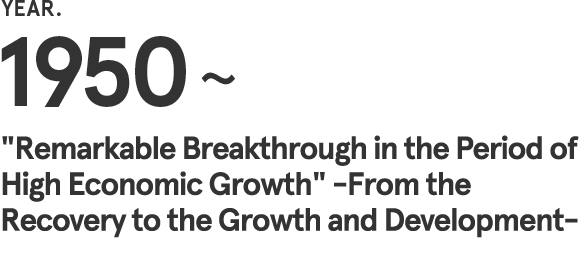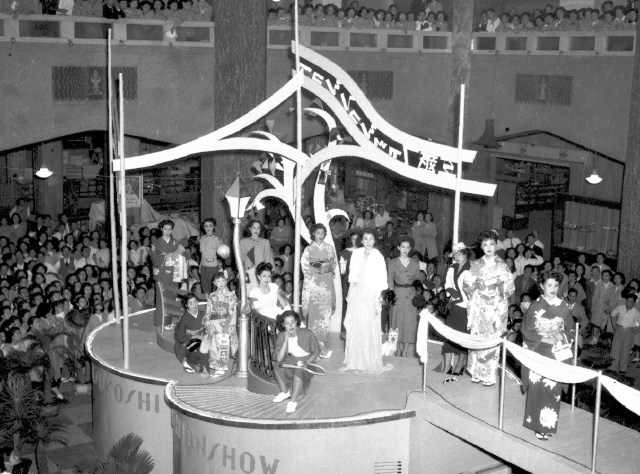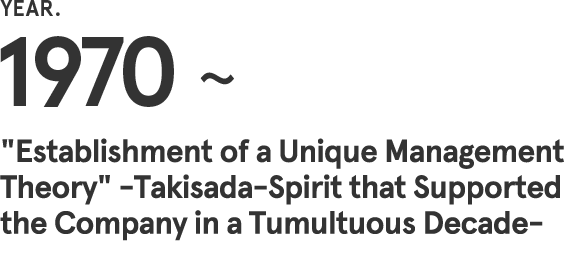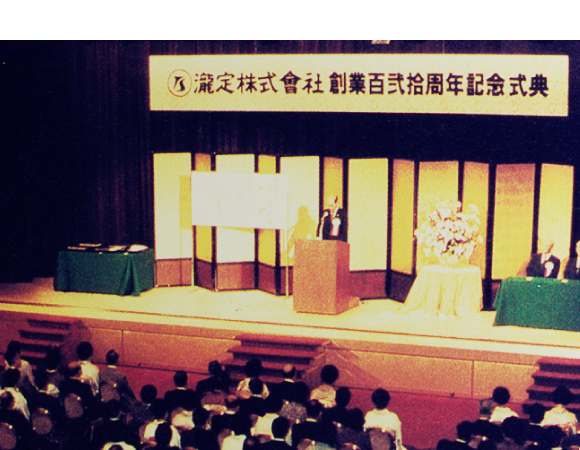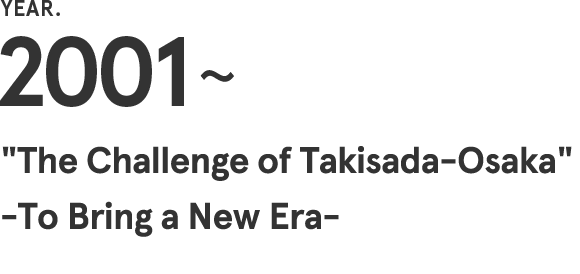
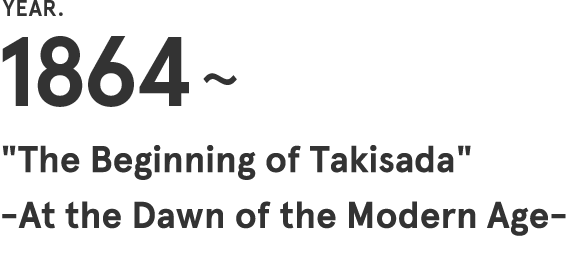
- It was 1864 when Sadasuke Taki I, the first president, took over Kinu-ya Sadasuke from his grandfather Hyoemon Taki and began to run a kimono wholesale business in Nagoya. In 1868, a year after the end of Tokugawa Shogunate, Emperor Meiji ascended to the throne and the era name was changed to "Meiji". The new government promoted the political measures such as civilization, increasing wealth and military power and encouragement of new industry. As you can see, Takisada took its step just as Japan was making a progress toward the new era of modernization.
- At the time, there were three types of textiles wholesale dealers: kimono fabrics dealer, cotton and hemp fabrics dealer and Western fabrics dealer. As for kimono fabric dealers, they were classified into following four types according to the type of fabrics: Kanto fabrics, Bino fabrics, Kyoto fabrics and Kansai fabrics. The epicenters of textiles trade were Osaka, Tokyo and Nagoya.
- Sadasuke I marketed, as a kimono wholesale dealer, Kyoto fabrics, Kanto fabrics and regional fabrics in 1868. He opened a branch in Kyoto and started operation of Silk factory as the manufacturing sector in 1888 and 1889 respectively. At the same time, with Hyoemon Taki, he established The Bank of Nagoya in 1882 and Owari Spinning Company in 1887. In 1891, he was elected to the member of Nagoya Chamber of Commerce & Industry. In that way, he consolidated a foothold in financial circles of Nagoya.
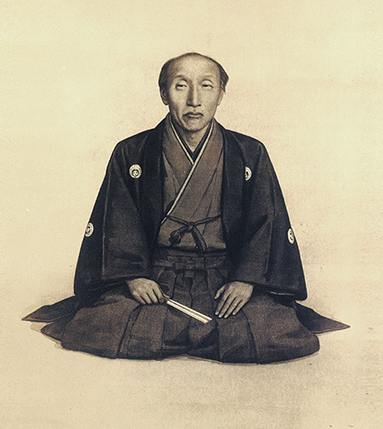

- It was 1864 when Sadasuke Taki I, the first president, took over Kinu-ya Sadasuke from his grandfather Hyoemon Taki and began to run a kimono wholesale business in Nagoya. In 1868, a year after the end of Tokugawa Shogunate, Emperor Meiji ascended to the throne and the era name was changed to "Meiji". The new government promoted the political measures such as civilization, increasing wealth and military power and encouragement of new industry. As you can see, Takisada took its step just as Japan was making a progress toward the new era of modernization.
- At the time, there were three types of textiles wholesale dealers: kimono fabrics dealer, cotton and hemp fabrics dealer and Western fabrics dealer. As for kimono fabric dealers, they were classified into following four types according to the type of fabrics: Kanto fabrics, Bino fabrics, Kyoto fabrics and Kansai fabrics. The epicenters of textiles trade were Osaka, Tokyo and Nagoya.
- Sadasuke I marketed, as a kimono wholesale dealer, Kyoto fabrics, Kanto fabrics and regional fabrics in 1868. He opened a branch in Kyoto and started operation of Silk factory as the manufacturing sector in 1888 and 1889 respectively. At the same time, with Hyoemon Taki, he established The Bank of Nagoya in 1882 and Owari Spinning Company in 1887. In 1891, he was elected to the member of Nagoya Chamber of Commerce & Industry. In that way, he consolidated a foothold in financial circles of Nagoya.


- After the victory against Russia in the Russo-Japanese War that broke out in 1904, Japan enjoyed establishment of companies and emergence of new industries.
In 1906, Sadasuke Taki I established Takisada GMK and opened Osaka Branch. Together with Nagoya Main Office and Kyoto Branch, the company made a new start. In 1908, Osaka Branch set up Trade Division and considerably increased sales backed by favorable business conditions. With the outbreak of World War I in 1914, Takisada was overwhelmed by demand of war supplies, and the company made a big leap; the Trade Division of Osaka Branch especially played an active role.
- On the other hand, Taisho democracy, the movement emerged in the 1910s, set off trends of democracy and liberalism and changed the lives of people. Meantime haute couture enjoyed its golden age in Paris and Western fashion was brought to Japan with the development of transportation and mass media. Mobo (Modern Boy) and Moga (Modern Girl), people who followed Westernized fashion and lifestyles in Japan, became fashionable figures among the bourgeois, and Western style dress was widespread from upper-class to lower- class. With the rise of working women, Western dress culture was developed and took root in the society. Textiles industry also experienced a boom.
- In 1920, the crash of the Japanese stock market as a counter reaction of booming economy also collapsed silk and cotton market, and dealers struggled with the unprecedented Great Depression. Takisada also sustained heavy losses and tolerated with poor performance for several years. The condition worsened by the Wall Street Crash of 1929, and the company was finally obliged to implement a reduction in their workforce to deal with the emergency situation. In 1931, the Japanese economy turned around spurred by the imposition of a gold embargo and ushered in an era of trade expansion until 1937. After overcoming the two crises, Takisada made a refreshing change. In 1936, the construction of a new headquarters building in Nagoya started and showed the prospect for future business reconstruction.
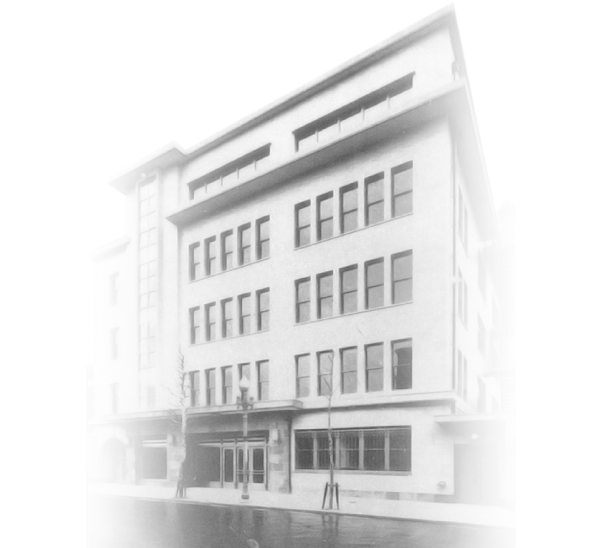

- In 1937, the construction of the new headquarter building was completed. The outbreak of Sino-Japanese war in July converted Japanese economy to wartime economy in no time. The severe economic regimentation put domestic sales in a difficult situation. Following this, Takisada established overseas subsidiaries in Dalian, Tianjin, Taipei, Bangkok and Shanghai and operated its business abroad. The company racked up profits successfully under military control. In 1940, the company was established as a corporation, Takisada Shoten Co., Ltd.; a long-cherished dream for Takisada finally came true.
- In December 8, 1941, Japan launched the Pacific War. All kinds of materials were collected for military purposes. In the area of garments, a coupon for clothes in a rationing system marked the end of the wholesale trade. Takisada ran business focused on overseas local subsidiaries but faced deep financial difficulties as the war situation worsened. The employees were drafted into military service successively, and the company was driven to the last ditch. In August 14, 1945, Japan accepted the Potsdam Declaration, and the end of war was announced. Takisada lost the headquarter building in Nagoya and the Osaka Branch building in air raids as well as overseas subsidiaries due to the end of the war.
- In 1946, the company started over with a clean slate with a new board, remaining firm in rejecting black market trade, which was flourishing in the postwar chaotic period. The company ran business honestly for the meantime by dealing with uncontrolled miscellaneous goods. Since 1948, the company got its business on track as a registered dealer. In addition to renovating Nagoya headquarter building and constructing a temporary office of Osaka Branch, the company hired new employees for the first time after the end of World War II. With the resurgence of the free economy, the company consolidated its structure and strived for the reconstruction and recovery of its business.
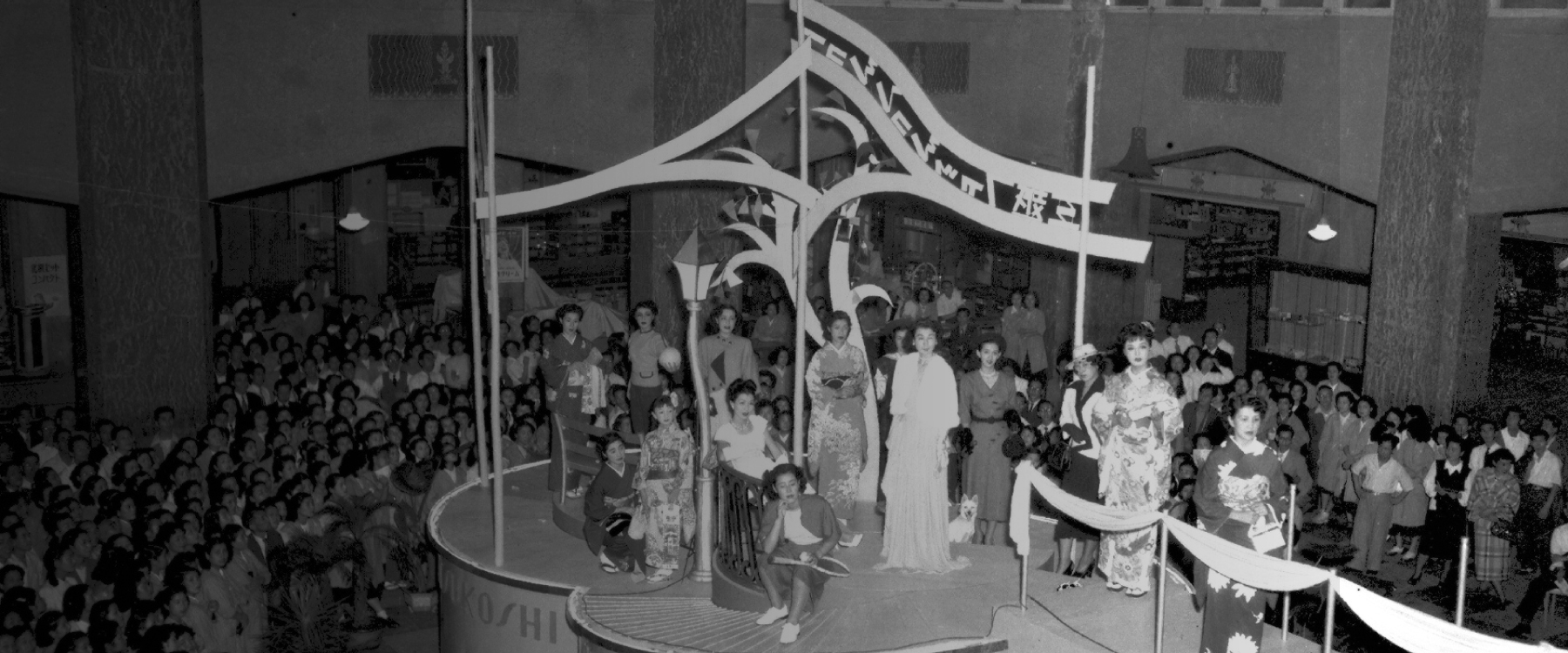

- In 1950, most of controlled textile products were decontrolled, and Japan saw a resurgence of free economy after 10 years. In 1952, due to proactive fiscal and monetary policies, national income recovered its prewar level.
- While Japan experienced a postwar reconstruction, a construction of a new building of Takisada Osaka Branch was completed in 1954. The company established new Osaka Branch by integrating Kyoto Branch. Meanwhile, Nagoya Headquarter changed its business category from the prewar kimono-based wholesale business for staging area to central wholesale business anchored by wool fabrics. The new Osaka Branch strived to make a great stride as a nationwide central wholesale dealer, based on dyeing and finishing products wholesale business built by Kyoto Branch.
- Since 1955, Japan enjoyed explosive prosperity called "Jimmu boom". Production levels and living standards recovered their prewar level which got Japanese economy back on the growth evolution track and led the country to the high-growth period called "Golden 60s".
- Entering the 1960s, the first baby boomer generation (born in 1947 and 1948) spread counterculture. Young fashion such as Hippie, Surfing, Mod and Ivy emerged. In the textile industry, study efforts for the synthetic fibers accelerated.
- Under the basic policy of being exclusively devoted to the textile industry, the company carried out critical management reforms. Based on section-oriented organizational structure, the company strived for the improvement of developmental power and made a big breakthrough.
In 1964 when Takisada celebrated its 100th anniversary in business, the company generated more than 10 billion yen in annual sales. It is no exaggeration to say that business foundation to support the company was formed in this period.

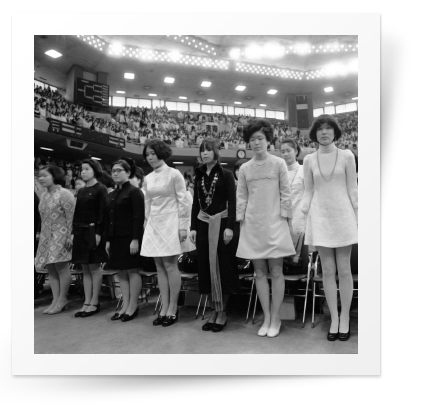

- Japan achieved a high level of growth since 1960s. However, in 1971, the international monetary turmoil was caused by dollar shock, and successively 1973 oil crisis occurred. Measures to control the soaring price led to major depression and high-growth period marked its end. In these turbulent circumstances, the textile industry also fell into a critical situation. On the other hand, by taking advantage of steep fall in the material prices, apparel manufacturers and major chain stores rode a wave of breakthrough; The key role in the industry shifted from major manufacturers and trading companies to apparel chain stores. The fashion began to diversify and became more chaotic. In 1979, DC (Designer's & Character's) brands and character brands boom arrived.
- Without getting swayed by the withering mood of the industry, Takisada strived to accomplish its mission to ensure a steady supply and successfully kept its growth rates at a high level. In 1975, the annual sales crossed the 100 billion yen mark.
What supported the company in a tumultuous decade of 1970s was the practice of a unique management theory: "Wholesale Functionalism" and "Dialectical Methodology”. The essential function of a wholesale dealer is to challenge the market risk and to tackle it head-on. A hypothesis generates a practice and the hypothesis is proved or modified by the practice leading to the next practice.
The management that reflects the essence of the wholesale business enabled to overcome the tumultuous period and established a strong presence in the industry.
- At that time, major customers of Takisada were wholesalers of fabrics and garments or apparel companies for wholesale distribution in Tokyo, Nagoya and Gifu. However, we started sales for apparel companies under the direction of "stepping sales into the apparel field, separating our business clearly from other wholesalers". In the two decades since then, we steadily increased our sales figures targeting growing young women's casual fashion market.
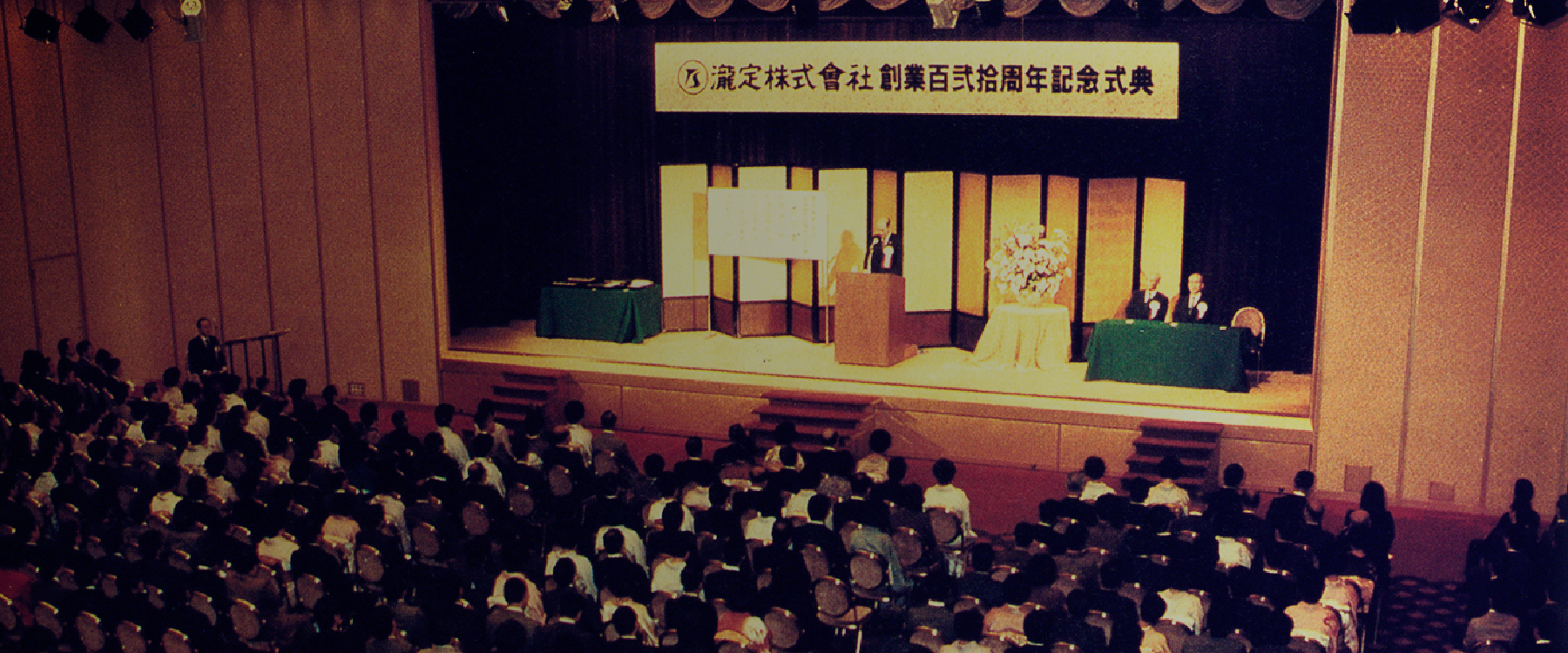

- Since the 1980s oil glut, Japan’s economy re-entered a recessionary phase, which led to the three years of worst postwar slump. Although the economy registered tones of recovery after that, consumer confidence had decreased. Continuing strong yen since 1986 stroked a severe blow to Japanese textile industry with high export ratio, which obliged domestic businesses to focus on domestic demand and import. Many companies moved their production bases to abroad, which accelerated the hollowing-out of domestic production. In the decade since 1990, major changes in politics and economy occurred both in Japan and abroad. The asset-inflated bubble economy and its collapse seriously threatened Japanese economy.
- On the other hand, the market faced an age of "lighter, more compact" trends. Fashion demands also became personalized, diversified and highly fashionable. Consumer minds also began to focus on "inner aspects than material aspects", and they desired "minimal" and "down-market" products. Along with these trends, "multi-products, small lot production in a short lead time" became more conventional in manufacturing. Consequently, risk avoidance was the top concern for the textile industry.
- This situation was a great opportunity for Takisada that had always been taking risks in its business history. By responding to the risk-averse demand of the industry and maintaining a stable supply of appropriate products in a timely manner, Takisada saw a tremendous increase in sales and profits. The company celebrated its 130th anniversary with a record-high performance. Its customers had greatly expanded to wholesale apparel companies for specialty shops, apparel companies for department stores and character brand apparel companies. Responding to the needs of each company “to distinguish from its competitors” and “to improve the quality of products”, Takisada has improved its proposal ability as a textile trading company by not only importing fabrics from European countries such as Italy, but also developing unique textiles itself.


- The new century began in the midst of Heisei recession. Japanese economy showed gradual recovery trends such as economic revitalization backed by the relaxation of regulations and credit or the growth of IT industry. However, the textile industry saw a major change in the industrial structure, and domestic apparel products market has consistently reduced. The market size which was 10 trillion yen at a maximum reduced to 7 trillion yen in 2007. As for the product procurement, domestic production ratio demonstrated a significant decrease by growing imports. In addition, the development of SPA promoted the outsourcing in manufacturing, and many sector peer companies shifted their business category to OEM. On the other hand, consumer needs diversified with the cultural maturity. It has entered an age of quick and dynamic change.
- To respond to these changes, Takisada decided to spin-off the company into two companies: Takisada-Osaka Co., Ltd., and Takisada-Nagoya Co., Ltd. Since August1, 2010, the new formed Takisada-Osaka strived to change its management policy from "quantitative expansion" to "quality-focus management". Focused on business with major apparel brands for department stores, Takisada-Osaka steadily improved the performance.
- However, the Lehman Brothers bankruptcy in 2008 triggered a global recession.
As a result, the apparel industry faced a precipitous fall in sales while low cost fast fashion came into vogue. The industry had entered a time of drastic changes. Facing the changes, Takisada-Osaka recognized the limitation of existing section-oriented organizational system.
- TAKISADA-OSAKA has always been concerned with customers' minds and responded to the demands of the times through its 150 years of history since the foundation. To reinforce the strength, TAKISADA-OSAKA implemented a mid-term management program called “Chance to Change (C2C)” in 2010, and has achieved major renovation of company reorganization.
In 2013, at the time of headquarters relocation to Namba, Osaka, TAKISADA-OSAKA announced the launch of the corporate brand "STYLEM"; By February 1, 2015, TAKISADA-OSAKA shifted to a new group management structure positioning TAKISADA-OSAKA CO., LTD. as a group headquarters subsequently succeeding its textile and garment business to newly established STYLEM CO., LTD.
- On February 1, 2021, TAKISADA-OSAKA CO., LTD. and STYLEM CO., LTD. were integrated, and our trade name was changed to STYLEM TAKISADA-OSAKA CO., LTD. Prior to this, we reexamined our company and reassessed our corporate philosophy. We will engrave our mission, vision, values, and slogan deep in our hearts and embark on a new endeavor to navigate the difficult seas that are the times we live in.
PageTop







